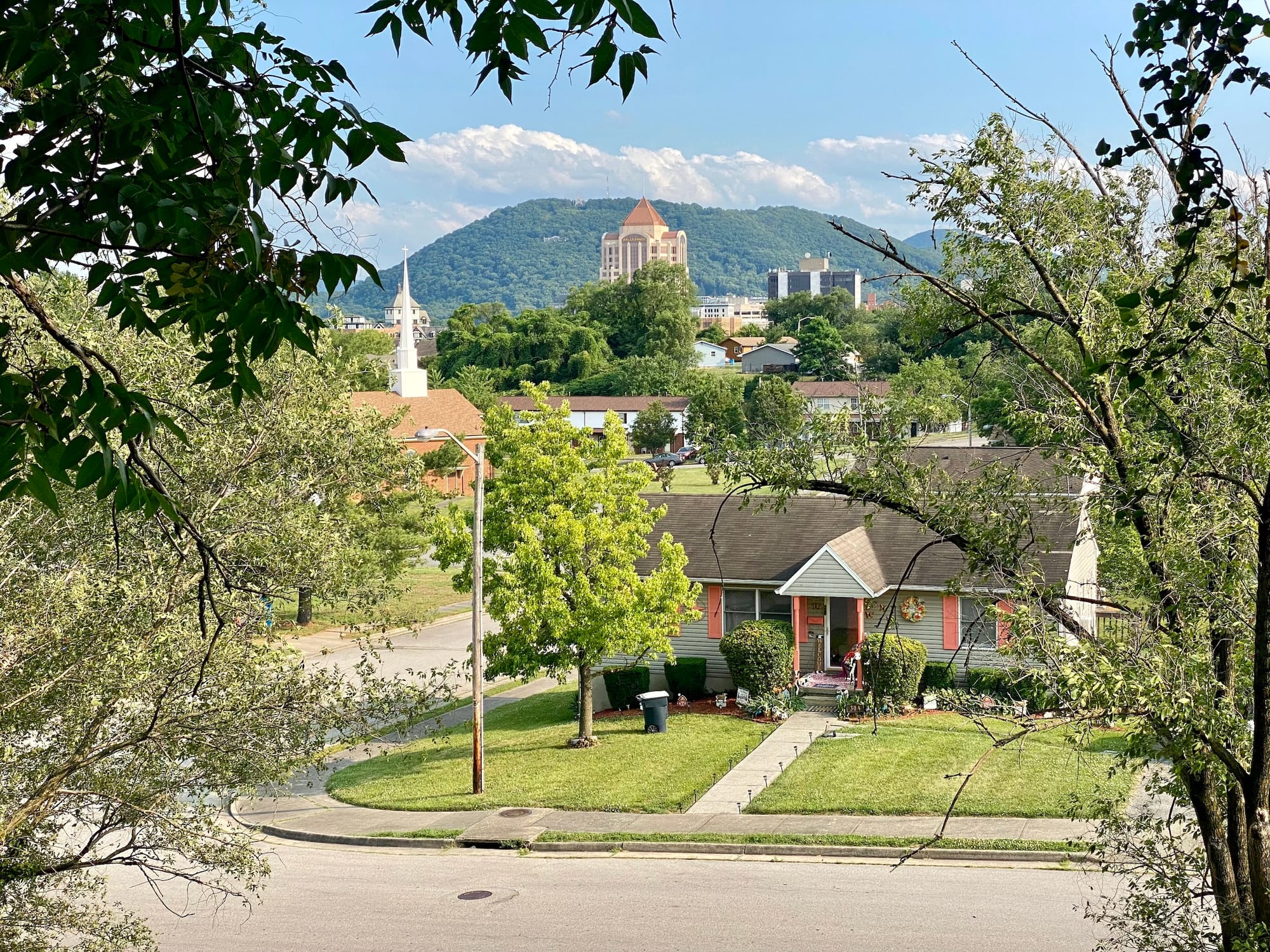Roanoke Valley Municipalities Have Room To Grow Tree Canopies, Study Finds
While the city has a goal of a 40 percent tree canopy coverage, a new study estimated Roanoke's tree canopy at 33 percent.

About one-third of Roanoke is covered by tree canopy, according to a new study, which finds that the city, Salem and Vinton could theoretically double their shade-casting overstories.
Roanoke officials say they are working to strengthen the city’s urban tree canopy, which can help fight extreme heat.
The city has a goal of increasing canopy coverage to 60 percent. The new analysis, prepared for the Roanoke Valley-Alleghany Regional Commission, pegs the city’s canopy at 33 percent.
“I think a lot of people are like, ‘Well, we've got trees,’ you know, ‘Why does this matter?’” said Amanda McGee, a senior planner for the commission.
Besides capturing planet-warming carbon emissions, McGee said, trees improve water quality, help reduce risks from flooding and increase property values.
“Probably the lowest hanging fruit to address [the] urban heat island [effect] is increasing tree canopy coverage,” McGee said, referring to the phenomenon where more asphalt-rich parts of a city, like Roanoke’s downtown, are far hotter than other sections.
The study, by providing the most reliable estimate of tree canopy coverage for the area, offers a more optimistic snapshot compared to a 2019 guesstimate of Roanoke’s canopy, which put it at 26 percent. But the report confirms Roanoke remains behind its tree canopy goals since a 2010 study suggested the city’s tree canopy stood at 48 percent coverage.
Two decades ago, Roanoke had a goal to maintain a 40 percent tree canopy, a widely accepted benchmark for communities.
“While this is considered an admirable minimum, community characteristics need to be taken into account,” the city's comprehensive plan states. “In order to experience lasting benefits, tree canopy needs to be increased and with targeted dispersion throughout the city.”
The study found Salem and Vinton had urban tree canopies of 35 percent. More rural Roanoke County had 76 percent canopy coverage. The data is based on 2021 aerial imagery.
Researchers also calculated how much more land could support trees, estimating another 29 to 32 percent of “possible planting area” in those jurisdictions.
“By implementing practices that encourage more efficient utilization of plantable space, the Town of Vinton, the City of Salem, and the City of Roanoke can each theoretically double their respective canopy coverages,” the report said.
Of course, most of that property is in private hands.
The study recommends that local governments educate residents since residential neighborhoods make up 60 percent of the Roanoke Valley’s potential new planting areas.
“Incorporating these findings into community outreach and education programs for citizens and private landholders is crucial,” the report says. “Pairing educational programming with tree giveaways, tree planting programs, and tree maintenance events can help increase urban tree canopy in the 21,500+ acres of plantable space on residential unified land areas.”
PlanIT Geo, a Colorado-based company, finished the tree canopy analysis in February and McGee presented its findings to the commission last month. Funding came from the Virginia Department of Forestry.
Planting trees in a city’s right-of-ways can provide shade on sidewalks and streets, and localities should also focus on planting trees in flood plains to prevent erosion and reduce flooding risks, according to the study.
Data down to a Census Block Group — which generally includes 600 to 3,000 people — can help inform local leaders where they need to focus their tree-planting efforts. Several Census tracts in Roanoke and Salem — impoverished or adversely affected by pollution — could also qualify for certain climate-related federal funding, such as for community tree planting.
Northeast sections of Roanoke and Roanoke County have the most potential for new trees, the study found. Parts of Northwest Roanoke could also increase canopy coverage by at least 36 percent.
The area with the least amount of tree canopy coverage is around downtown Roanoke.

